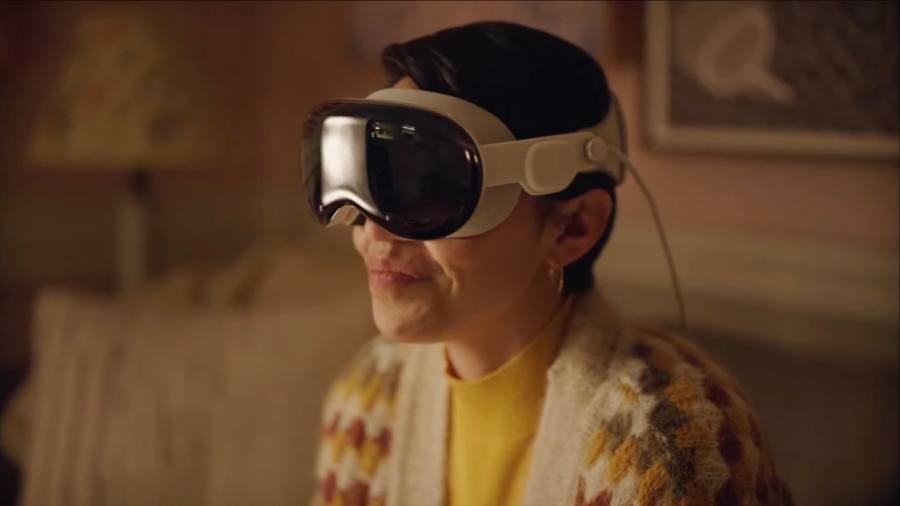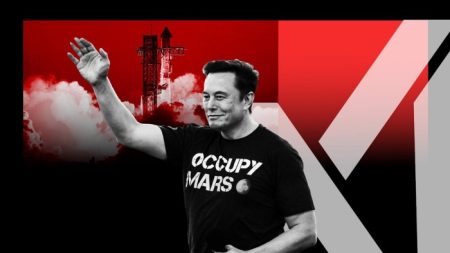Apple unveiled its long-awaited “mixed reality” headset on Monday, in its most anticipated hardware product launch since Steve Jobs revealed the iPad in 2010.
The gadget, called Vision Pro, will be available “early next year”. It combines virtual reality with augmented reality, which overlays digital images on top of the real world. Apple said it would sell for $3,499, even more than most analysts had expected and nearly 12 times the price of Meta’s Quest 2, the biggest-selling VR headset.
The Vision Pro is the biggest gamble on a product yet from chief executive Tim Cook, who took over from Steve Jobs in 2011. Cook has long been hailed as an operations genius who took Apple’s market value up from about $350bn in 2011 to nearly $2.9tn currently, but he has long been criticised for iterating on past ideas and delaying projects such as the Apple Car.
Tim Bajarin, consultant at Creative Strategies, said the headset’s launch should “cement Cook’s legacy” beyond operations. “This won’t put him in the same class as Steve, but Steve was a standalone visionary. Cook has carried his vision into the future,” he said.
Cook on Monday said the headset would be used for “seamlessly blending the real world with the digital world”, and was “the first Apple product you look through and not at”. In a sign that the company does not expect the device to become a big seller in the near-term, he said the launch represented “the beginning of a journey” to what the company calls “spatial computing”, predicting it would one day become as important as personal computing on the Mac and the iPhone’s introduction of mobile computing.
In a pre-recorded video demonstration shown at the start of its annual Worldwide Developers Conference, Apple showed the headset being used to play video games, watch entertainment on large “virtual” screens and collaborate by working jointly on documents and watching multiple video calls.
“When you actually test it and see it in action, it’s staggering,” said Bajarin, who has used the device. “If you’re watching a sports game, you’re actually on the field. You’re in front of the action. And if the movie is 3D, you’re almost in the 3D world.”
The price of the device and a narrow range of applications is expected to limit its use in the early years to gaming and a range of specialised workplace uses. The headset is also aimed at software developers, who Apple hopes will create a wider range of VR and AR applications.
“Gaming has been the killer use case for VR so far, but what Apple is doing is appealing to an entirely different crowd — it’s a more casual headset, it’s something you could give to your parents,” said Leo Gebbie, analyst at CCS Insight. “The flip side is, it costs $3,500, so I won’t be able to buy one for my parents for some time.”
Apple shares hit a record high ahead of the announcement, rising more than 2 per cent to $184.91 and topping the previous record set in January 2022, before falling back as the headset was unveiled. The shares ended the day 0.8 per cent lower at $179.58.
Apple geared the device towards white-collar workers, saying it would be “the ultimate workspace”. But, in a move that surprised analysts who expected the product to be aimed primarily at business users, Apple showed people looking at photos and videos, reading documents and surfing the web.
Apple said the Vision Pro could be “your own personal movie theatre”, with a “100-feet wide” screen and automatic dimming of the real world around the screen. Its demonstrations mainly showed people using the headset to watch two-dimensional screens, in contrast to the full three-dimensional virtual worlds created by Meta.
Carolina Milanesi, founder of The Heart of Tech, a research group, said Apple was “playing to both productivity and work, as well as entertainment, so you think differently about the price point”.
Bob Iger, Walt Disney chief executive, called Vision Pro “a revolutionary platform” and said it would allow Disney to create content that has not been possible before. A video made with Disney showed Mickey Mouse jumping out of a photo frame and into the wearer’s living room, leaping on to the furniture. However, the only service Disney announced for the device at launch was its existing Disney Plus video streaming content.
Apple’s revenue is expected to fall 2 per cent in its current fiscal year, which ends in September, and most analysts expect it to sell only about 200,000 Vision Pro headsets in the first year. However, Wall Street is hoping the device will become a solid contributor to the company’s revenue within five years, with the potential to one day become the most significant computing platform since the launch of the iPhone.
At the start of its annual conference on Monday, Apple also announced faster versions of the Mac studio desktop, a 15-inch MacBook Air, and the first Mac Pro with “Apple Silicon” — completing its multiyear phaseout of Intel chips across its entire portfolio. It promised its newest computers would offer “outrageous performance”.
Read the full article here













